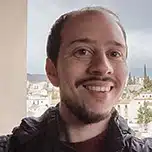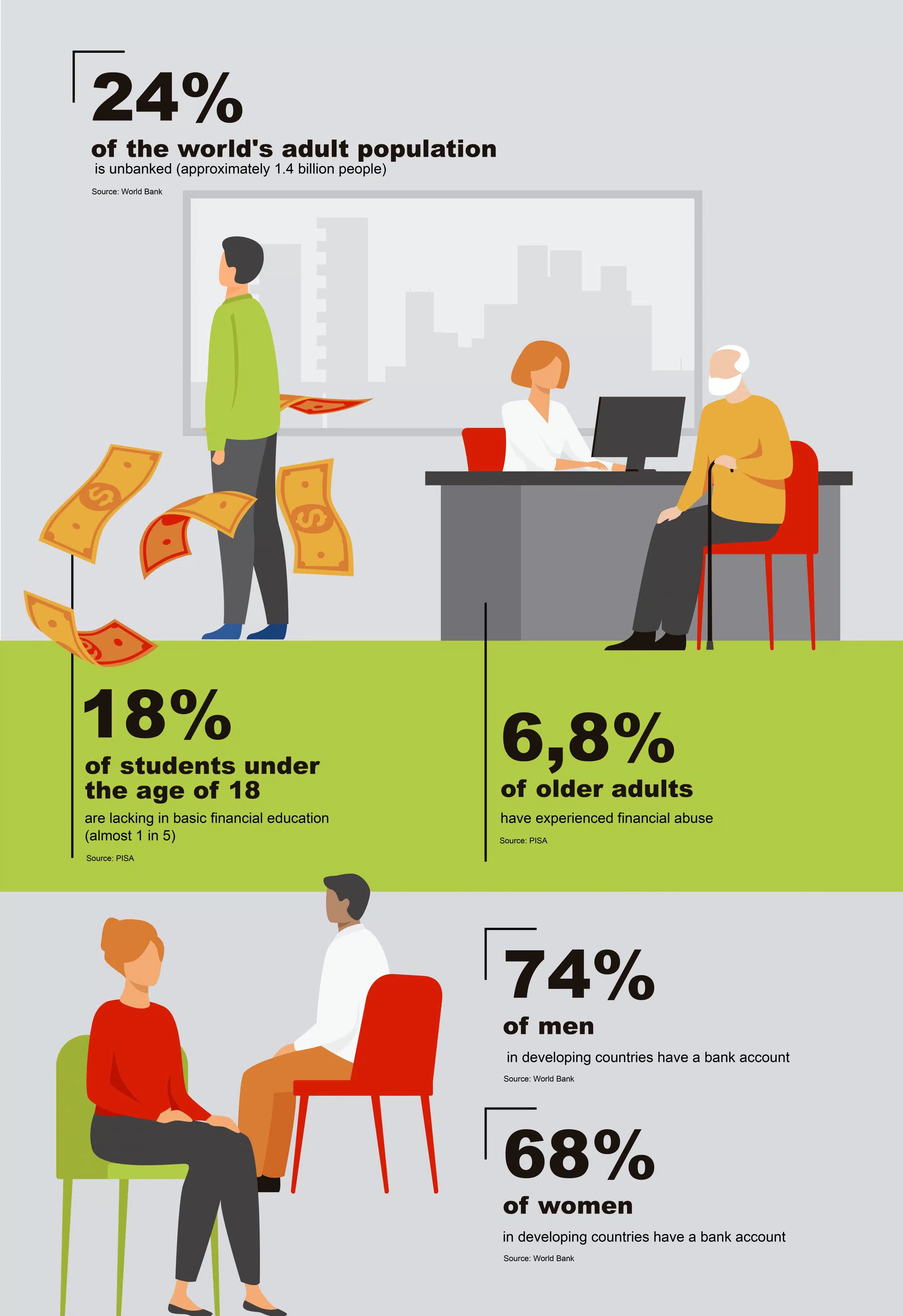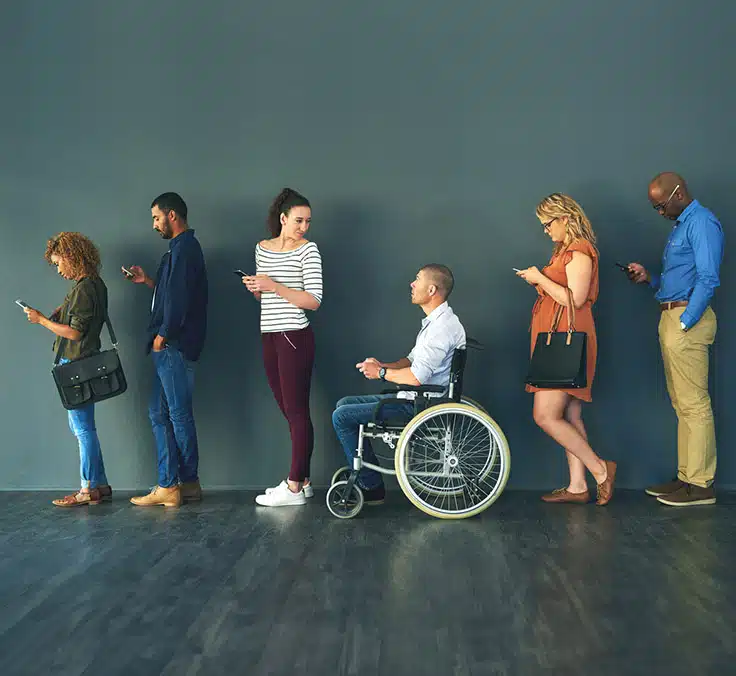SUSTAINABILITY | 08.06.2025
Financial literacy for inclusion: a tool that closes gaps

Mauricio Manini
Poor financial literacy is an obstacle for various vulnerable sectors, since, without it, it becomes more difficult to make better financial decisions. However, governments and companies have taken on the challenge and are working to reverse that situation.
Financial literacy, understood in general as learning to manage money wisely, has played a more relevant role in recent years. According to OECD, in 2011 only 26 governments had proposed national programs on the subject (including Spain’s Finances for All), while by 2015 that number had increased to 59. While it has gained supporters, there is still a long way to go.
Beyond associating it with cold numbers, financial literacy represents a great opportunity to help close gaps, enabling everyone to make better decisions. As the World Bank indicates, “those who have formal accounts can store, send, and receive money, which allows them to invest in health, education, and business.”
According to the Global Findex 2021 by the World Bank, 24% of the world’s adult population—around 1.4 billion people—is unbanked. This happens mainly among people living in developing economies, women, people in poverty, and the unemployed.
According to the World Bank, 24% of the global adult population is unbanked. The aim is to empower and facilitate their inclusion
Another important group is young people. According to a PISA analysis published in 2024 titled How Financially Smart Are Young People, 18% of the students surveyed (nearly 1 in 5) lacked basic financial literacy. That means that “they cannot apply what they know to real situations involving problems and financial decisions.”
In parallel, people over 60 also face difficulties. For example, the World Health Organization has stated that 6.8% of older adults have suffered financial abuse, with consequences that can lead to “financial devastation.” These acts range from the illegal use of money by another person to scams and financial fraud. Moreover, as noted by the Consumer Financial Protection Bureau, financial abuse can lead to emotional harm, depression or anxiety, poor physical health, and loneliness, among other potential consequences.
From one end to the other: how to include people of different ages
According to Ana Puente Pérez, Head of Sustainable and Digital Finance at the Ministry of Economy, Trade, and Business of Spain, in the MAPFRE Economics Café podcast, financial literacy is a topic of growing importance. She highlights two perspectives to understand it: on one hand, as a shield or protection against unfortunate events (such as an attempted fraud); and on the other hand, as the opportunity to develop our life or business project.
According to the World Bank, 24% of the global adult population is unbanked. The aim is to empower and facilitate their inclusion
To ensure the inclusion of young people, according to Puente Pérez, it is important to foster a public-private link through, for example, educational agreements involving financial institutions, government offices, and educational centers, as well as providing accessible websites for consultation. In this sense, at MAPFRE, we have developed a program on TikTok specifically aimed at young people, called #GRWMAPFRE: Learning about finances and insurance, aimed at delivering useful information in a dynamic and easy-to-understand format.
Regarding older adults, Puente Pérez considers it crucial to address the digital divide and offset the increasing digitalization in the provision of financial services, supporting these groups in the transition from physical offices to digital platforms. For the specialist, it is important to have a “specific commitment” to seniors and to offer financial education tools that respond to their needs.

Achieving a better future financial
Within the MAPFRE Strategic Plan 2024-2026, we specify that one of the company’s core focuses is “developing inclusive policies, supporting financial education, and promoting greater accessibility to insurance.” It is a commitment we undertake within the framework of our dedication to sustainability, alongside the path toward a low-carbon economy and support for better corporate governance.
In that sense, in line with MAPFRE’s social commitment, we propose three educational areas that help us focus on a better future. The first is “Your savings and finances,” to understand how to manage income, expenses, savings, and investments. The second is “How to invest your money,” so that the capital works in order to seek returns, with a realistic vision and determined objectives. The third is “Insurance and you,” presented as a means for covering risks and having a network to recover if something bad happens.
Furthermore, with the idea that this knowledge is accessible to everyone, we have made available a specific website about Financial Literacy with videos, texts, and podcasts, so that anyone can learn about the subject. There, specialists speak in simple language about complex concepts like “compound interest” or “investment funds,” as well as explaining the role of emotions in investing, to name just a few examples.
There are also projects that are conducted “face-to-face” and that help to reduce gaps. According to the World Bank, in developing countries, fewer women have bank accounts compared to men (68% versus 74%). For this reason, in Guatemala, we have launched the MAPFRE Mujer program, a space for meeting, culture, and women’s development. The project includes talks on topics such as entrepreneurship, financial literacy, or insurance, and it aims to ensure that more women have financial tools and can improve their economic situation.
Mónica Zuleta, Corporate Deputy General Manager for Sustainability at MAPFRE, affirms that the primary goal of financial literacy is to promote a more equitable economic system, and we firmly believe that the word ‘inclusion’ should always be at the heart of this concept. Thus, beyond dissemination efforts, actions are carried out in various countries to reach hard-to-access communities.
“At MAPFRE, we are aware of this issue and, among many other actions we undertake regarding equality, we have a clear objective: to ensure that the most vulnerable segments adopt the necessary tools to improve their financial situation,” Zuleta stated.
Another example is our project MAPFRE na Favela, with its pilot program in São Paulo (Brazil), through which we offer microinsurance to groups that normally cannot access the financial system, partly due to informality. By teaching them about various tools and facilitating access, a range of opportunities opens up for these groups, enabling them to plan their finances, purchase insurance, and avoid financial ruin in case of an accident.
When we consider the current social gaps and observe the outcomes of projects aimed at closing them, it becomes clear that financial education is about much more than just managing numbers well. It is, moreover, a key instrument to reduce inequalities and improve the quality of life for all people.
RELATED ARTICLES:



